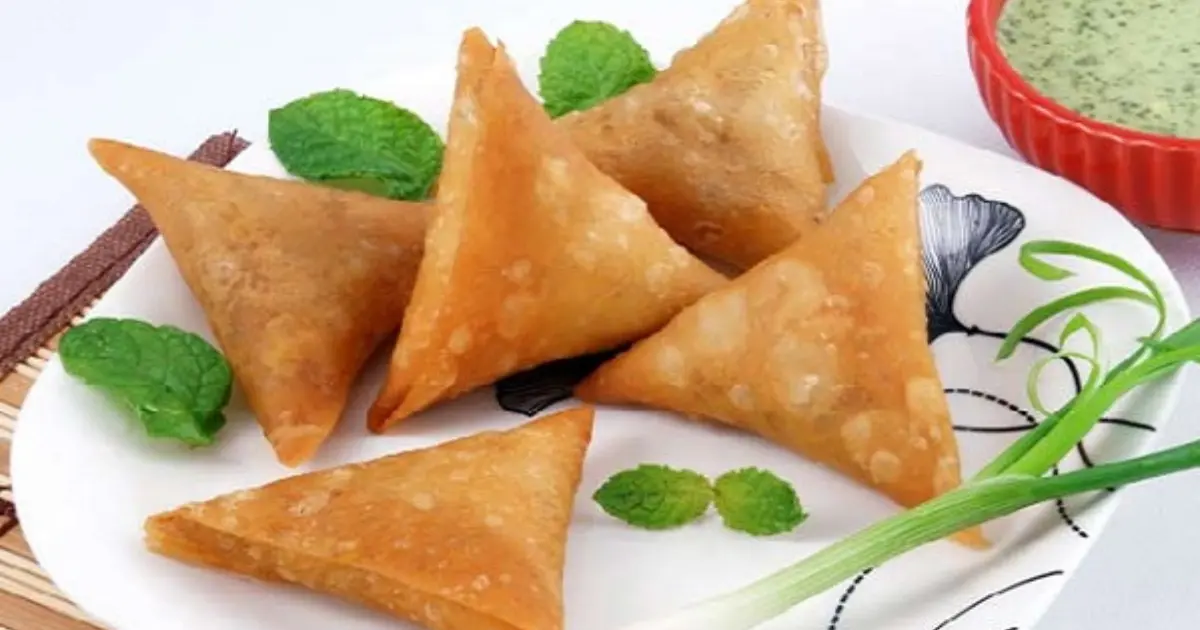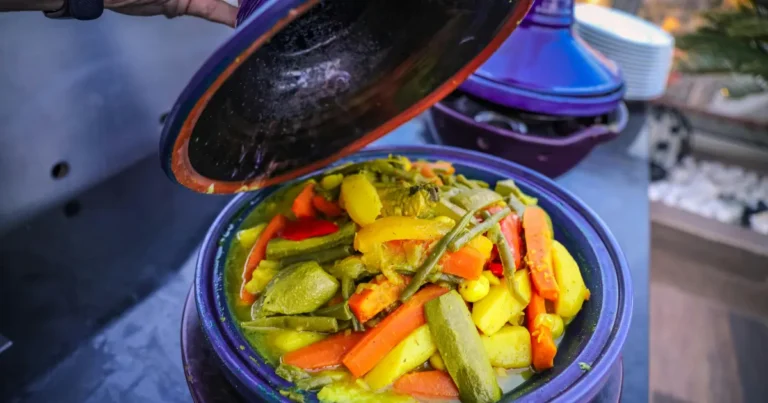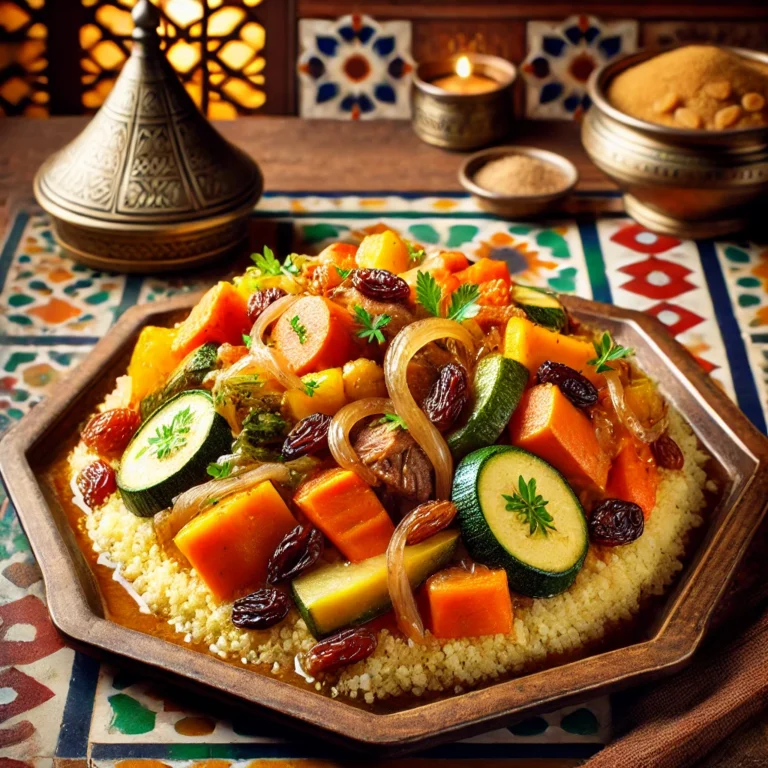Almond Briouat: 7 Reasons It’s the Ultimate Moroccan Treat
Briouats street food morocco
In Morocco’s busy markets and alleys, a tasty treat awaits you – Savory Moroccan Pastry. These savory pastries are a big hit, loved by both locals and visitors. They have crispy outsides and fillings that burst with flavor.
Savory Moroccan Pastry come from Morocco’s rich culture, loved for generations. Walking through Marrakech’s medinas, Fez’s souks, or coastal cities, you’ll smell the fresh Savory Moroccan Pastry. It’s like they’re calling you to try this delicious Moroccan treat.
Key Takeaways
- Savory Moroccan Pastry are a beloved Moroccan street food known for their crispy texture and diverse fillings.
- These savory pastries have a rich cultural history and are deeply rooted in Moroccan cuisine.
- Savory Moroccan Pastry can be found in various regional variations across the country, each with its own unique flavors and preparation methods.
- Enjoying briouats is a quintessential cultural experience for both locals and tourists visiting Morocco.
- Savory Moroccan Pastry offer a delightful taste of the vibrant and flavorful North African culinary heritage.
What Are Moroccan Briouats: Origins and Cultural Significance
Savory Moroccan Pastry are a favorite pastry in Morocco, deeply rooted in the country’s culinary heritage. They come from ancient Moorish and Arab traditions. Over time, these tasty treats have become a key part of traditional Moroccan food and social events.
Historical Evolution of Savory Moroccan Pastry
The history of Savory Moroccan Pastry goes back to the 8th century. The Moorish influence brought advanced pastry-making skills to Morocco. Over the years, these pastries have changed, with each area adding its own twist. Now, you can find everything from flaky, triangular Savory Moroccan Pastry in the north to crescent-shaped ones in the south.
Cultural Role in Moroccan Cuisine
Savory Moroccan Pastry are more than just a tasty snack. They are a big part of Moroccan culture. They’re often enjoyed at weddings, festivals, and religious events. They show the country’s love for hospitality, generosity, and its culinary heritage.
Regional Variations Across Morocco
- In the north, Savory Moroccan Pastry are filled with savory items like meat, cheese, or veggies. The south prefers sweet fillings like almond paste or honey.
- Coastal cities are famous for their seafood-filled Moroccan Pastry, thanks to the fresh seafood available.
- Some areas add special spices and herbs to their Moroccan Pastry, making the flavors even richer.
From Marrakech’s lively souks to Fez’s traditional kitchens, Moroccan Moroccan Pastry showcase the country’s rich culinary heritage. They highlight the importance of traditional Moroccan food in its culture.
Essential Ingredients for Authentic Savory Moroccan Pastry
Making the perfect Moroccan Savory Moroccan Pastry requires top-notch ingredients. The right phyllo dough and Moroccan spices are key. Each part adds to the amazing taste and texture.
The briouat starts with phyllo dough. This thin pastry makes the flaky layers. It’s the perfect base for various fillings, letting the Moroccan spices take center stage.
The fillings are where the magic happens. They often mix halal ingredients like seasoned meat, cheese, or veggies. Moroccan spices like cumin and cinnamon add a special flavor. It’s like a trip to Morocco’s lively streets.
- Phyllo dough: The delicate, paper-thin pastry that forms the base of Savory Moroccan Pastry.
- Moroccan spices: Essential seasonings like cumin, cinnamon, paprika, and more, which add authentic flavor.
- Halal ingredients: High-quality, ethically sourced meat, cheese, and vegetables that are suitable for Muslim diets.
Using the best ingredients is crucial for making great Savory Moroccan Pastry. The right phyllo dough, Moroccan spices, and halal fillings bring Morocco’s flavors to your kitchen.
Traditional Preparation Methods and Techniques
Making authentic Moroccan briouats needs a mix of old techniques and cooking skills. It’s all about the folding and deep-frying. These steps are key to getting the flaky texture and flavors that make this street food special.
Folding Techniques for Perfect Moroccan Pastry
The secret to great Moroccan Pastry is in the folding. Moroccan chefs have developed many folding methods. Mastering pastry folding is important. It makes the Moroccan Pastry look good and taste great.
Frying Tips and Best Practices
To get the right crispiness, frying needs the right temperature and time. Moroccan cooking stresses using the right oil and keeping the frying temperature just right. Deep-frying tips are crucial for making Moroccan Pastry that are golden and perfectly fried.
Common Mistakes to Avoid
Even experienced cooks can make mistakes when making Savory Moroccan Pastry. Overworking the dough, using the wrong oil, or not sealing the pastry can ruin the dish. Knowing these common mistakes helps cooks make better Savory Moroccan Pastry every time.
| Folding Technique | Frying Tips | Common Mistakes |
|---|---|---|
|
|
|
Popular Savory Moroccan Pastry Fillings and Variations
Moroccan street food, briouats, has many tasty fillings. You can find everything from savory meats to seafood and vegetarian choices. There’s something for everyone.
Classic Savory Moroccan Pastry have seasoned ground lamb or beef. They’re cooked with Moroccan spices like cumin and cinnamon. This mix is wrapped in pastry, blending flavors and textures perfectly.
Seafood lovers will enjoy Moroccan coastal Savory Moroccan Pastry. They’re filled with white fish, shrimp, or mixed seafood. These are seasoned with herbs and a hint of citrus.
Vegetarians and vegans have plenty of options too. Moroccan Pastry can be filled with sautéed veggies like eggplant and zucchini. They’re seasoned with spices and a bit of cheese.
Modern chefs are also getting creative with briouats. They mix Moroccan flavors with international ones. This shows how versatile and adaptable this dish can be.
Looking for something familiar or adventurous? Moroccan Moroccan Moroccan Pastry have it all. From classic meats to seafood and veggies, there’s a journey of flavors waiting for you.
Where to Find Moroccan Pastry Street Food Morocco
Travelers looking for a real Moroccan food experience should check out the street food markets. These places offer tasty Moroccan Pastry (savory pastries) and more. They also show off Morocco’s rich culture.
Best Street Food Markets in Major Cities
In Marrakech, Jemaa el-Fnaa square is a top spot for Moroccan Pastry. Food vendors here serve up fresh briouats with various fillings. Casablanca’s Bab Doukkala and Rabat’s Bou Regreg markets also have great Moroccan Pastry.
Famous Briouat Vendors and Locations
- In Marrakech, “Mama Fatima” at Jemaa el-Fnaa square is famous for her meat-filled Moroccan Pastry.
- In Fez, Bab Bou Jeloud market is home to “Hadj Ahmed,” known for his delicious Moroccan Pastry.
- In Essaouira, the seaside promenade has many vendors. “Briouat Maison” is a top choice for Moroccan Pastry.
Price Ranges and What to Expect
Moroccan Pastry in Moroccan street food markets are cheap, costing from 5 dirhams (about $0.50 USD) to 20 dirhams (around $2 USD). You’ll enjoy a lively scene where you can eat fresh briouats and drink mint tea.
| City | Market | Average Briouat Price Range |
|---|---|---|
| Marrakech | Jemaa el-Fnaa | 5-20 dirhams ($0.50-$2 USD) |
| Casablanca | Bab Doukkala | 5-15 dirhams ($0.50-$1.50 USD) |
| Rabat | Bou Regreg | 7-18 dirhams ($0.70-$1.80 USD) |
| Fez | Bab Bou Jeloud | 6-20 dirhams ($0.60-$2 USD) |
| Essaouira | Seaside Promenade | 8-22 dirhams ($0.80-$2.20 USD) |
Serving Traditions and Accompaniments
In Morocco, Moroccan tea and dipping sauces are key to enjoying briouats. These serving methods boost flavors and bring people together. It’s a special way to share this beloved street food.
Briouats come with a pot of aromatic mint tea. This tea ritual is a big part of Moroccan culture. It makes everyone feel connected and relaxed. The tea’s herbal taste goes well with the briouats’ fillings.
Briouats also have dipping sauces like spicy harissa or tangy lemon-garlic. These sauces add a tasty contrast to the pastry. Dipping the briouats into these sauces is a favorite part of the meal. It lets everyone make the dish their own.
The way briouats are served is also special. They’re placed on fancy platters or trays. These platters show off the food beautifully. They make the briouats, tea, and sauces a feast for the eyes and taste buds.
So, serving briouats in Morocco is more than just eating. It’s a celebration of culture, community, and tradition. It shows how food brings people together.
Health Considerations and Modern Adaptations
Traditional Moroccan briouats are delicious, but health-conscious people look for healthier options. We explore how to enjoy these tasty treats without compromising health.
Nutritional Information
Traditional briouats are high in calories and fat due to their deep-frying. But, there’s a healthier twist. Baked briouats offer a lower-fat version without losing the taste and texture.
Dietary Modifications
Briouats can be made to fit different diets. For those who don’t eat meat, there are veggie or lentil fillings. And for those with gluten issues, there are gluten-free options.
Healthier Cooking Alternatives
- Baking: Baked briouats are lower in fat and calories but still flaky.
- Air Frying: This method gives a crispy outside without oil.
- Grilling: Grilling adds a smoky flavor and cuts down on fat.
With these healthier cooking and dietary options, briouats can be enjoyed by everyone. They’re a tasty, guilt-free treat that suits many dietary needs.
Tips for Making Briouats at Home
Making Moroccan briouats at home is a fun cooking journey. Start by picking top-notch ingredients like feta cheese, ground lamb, or fresh veggies. Try out different spice mixes, like cumin, paprika, and cinnamon, to add deep flavors.
Get a strong rolling pin and a sharp knife for precise dough shaping. It might take a few attempts to get the folding right, but with practice, your briouats will look great. Keep an eye on the frying temperature to get them golden and crispy on the outside, but still soft inside.
Feel free to try new fillings and flavors. Briouats can be both sweet and savory, so go wild with ideas like spiced pumpkin, caramelized onions, or chocolate-hazelnut spread. Store them in an airtight container for up to three days to enjoy your homemade treats for longer.
FAQ
What are Moroccan briouats?
Moroccan briouats are a favorite street food in Morocco. They are crispy pastries filled with meat, seafood, vegetables, or cheese. These pastries are a big part of Moroccan cuisine.
What is the cultural significance of briouats in Morocco?
Briouats are very important in Moroccan culture. They have a rich history tied to traditional cooking. People enjoy them at gatherings and special events, showing their love for Moroccan food and hospitality.
What are the key ingredients used in authentic Moroccan briouats?
Making traditional Moroccan briouats needs phyllo dough, various fillings, and Moroccan spices. Using fresh, quality ingredients is key to getting the right taste and texture.
How are briouats traditionally prepared and cooked?
Making briouats involves folding the dough into triangles or crescents. They are then deep-fried until crispy. It’s important to fry them right to get the best taste.
What are some of the most popular briouat fillings and variations?
Briouats can have many fillings like minced meat, seafood, or vegetables. There are also regional and modern twists, offering something for everyone.
Where can I find the best briouats street food in Morocco?
For the best briouats, visit street food markets in cities like Marrakech, Fez, and Casablanca. These places are known for their delicious briouats.
How are briouats traditionally served and enjoyed in Morocco?
Briouats are often served with mint tea. This refreshing drink pairs well with the savory pastries. They are enjoyed as snacks or appetizers, part of Moroccan food culture.
Are there any health considerations or modern adaptations for briouats?
Traditional briouats are fried, which can be high in fat and calories. But, baking them is a healthier option. You can also make them vegetarian or gluten-free for different diets.
Can I make briouats at home?
Yes, you can make Moroccan briouats at home. With the right ingredients and steps, you can enjoy these tasty pastries in your own kitchen.




